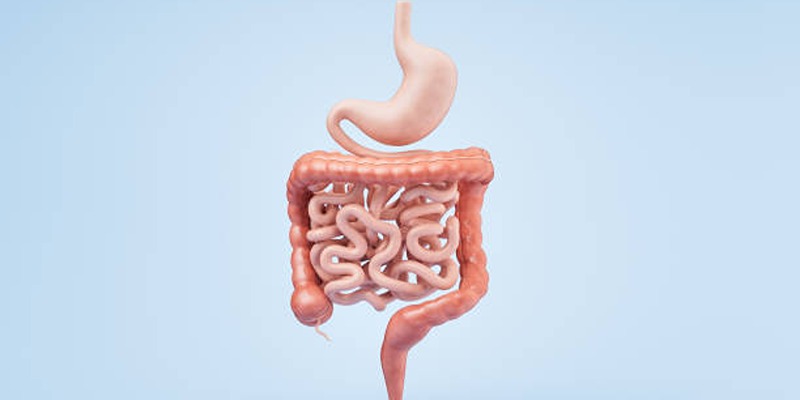Understanding Appendicitis: Causes and Health Risks
Advertisement
The medical problem of appendicitis occurs because the appendix becomes inflamed thus creating intense abdominal pain in combination with nausea and high temperatures. People between the ages of 10 and 30 are affected most frequently by this condition which demands immediate medical care to avoid a ruptured appendix or infection. The article serves as a guide by examining its initiators alongside warning indications and health hazards of appendicitis.
What Is Appendicitis?
 The appendix becomes inflamed from blockages or infections or their combined effects in patients undergoing this condition. The need for immediate medical care stands essential in treating this condition because long-term treatment delays can result in dangerous secondary medical complications. An appendectomy functions as the most successful medical approach for treating appendicitis by removing the infected appendix.
The appendix becomes inflamed from blockages or infections or their combined effects in patients undergoing this condition. The need for immediate medical care stands essential in treating this condition because long-term treatment delays can result in dangerous secondary medical complications. An appendectomy functions as the most successful medical approach for treating appendicitis by removing the infected appendix.
The symptom development of appendicitis occurs instantaneously before intensifying over several hours. The main indicator of appendicitis is abdominal pain that begins as a gentle stomach ache close to the navel and then develops into stronger pain in the right lower abdomen. The set of symptoms includes nausea as well as vomiting and fever and passing gas becomes challenging.
Causes of Appendicitis
The exact cause of appendicitis is not always clear, but it is believed to be caused by a blockage in the appendix. This can occur due to several reasons, including:
1. Blockage in the Appendix
One of the most common causes of appendicitis is a blockage inside the appendix. This blockage can prevent normal fluid drainage, leading to infection and swelling. The primary causes of blockage include:
- Hardened Stool (Fecalith): Waste material can sometimes enter the appendix and become trapped, forming a hard mass that blocks the opening.
- Enlarged Lymph Nodes: The lymph nodes in the intestinal region may swell due to infections, pressing against the appendix and blocking it.
- Foreign Objects: In rare cases, small objects, such as seeds or food particles, can become lodged in the appendix, leading to inflammation.
When the appendix becomes blocked, bacteria multiply rapidly inside, causing the organ to swell and become filled with pus. If left untreated, the appendix may rupture, spreading the infection throughout the abdomen.
2. Bacterial or Viral Infections
Certain bacterial and viral infections can lead to appendicitis. When harmful bacteria enter the digestive system, they can travel to the appendix, causing it to become infected. Some of the bacteria commonly linked to appendicitis include Escherichia coli (E. coli) and Streptococcus species.
Viral infections that affect the intestines, such as gastroenteritis, can also contribute to appendicitis. These infections may cause inflammation in the intestines, leading to swelling in the appendix and eventual blockage.
3. Gastrointestinal Disorders
Certain digestive disorders may raise the likelihood of developing appendicitis by triggering inflammation or obstruction in the appendix. These include:
- Chronic Intestinal Inflammation: Conditions like Crohn’s disease and ulcerative colitis lead to prolonged inflammation in the digestive tract. This persistent irritation can affect the appendix, increasing the chances of infection and swelling.
- Parasitic Infestations: Some intestinal parasites, such as roundworms, can enter the digestive system and obstruct the appendix. This blockage may result in infection, swelling, and eventually appendicitis if not treated promptly.
4. Trauma to the Abdomen
A direct injury or blunt force trauma to the abdomen can lead to inflammation in the appendix. While rare, accidents or physical blows that impact the lower right abdomen may trigger appendicitis.
5. Genetic Factors
Studies suggest that genetics may play a role in appendicitis. If close family members have experienced appendicitis, there may be an increased likelihood of developing the condition. However, more research is needed to determine the exact genetic link.
Symptoms of Appendicitis
 Recognizing the symptoms of appendicitis early is crucial for preventing serious complications. The most common symptoms include:
Recognizing the symptoms of appendicitis early is crucial for preventing serious complications. The most common symptoms include:
- Sudden and Severe Abdominal Pain: The pain often starts near the belly button and moves to the lower right side of the abdomen. It gradually worsens over time.
- Loss of Appetite: People with appendicitis often experience a reduced desire to eat.
- Nausea and Vomiting: As the condition progresses, nausea and vomiting may occur.
- Swelling and Tenderness in the Abdomen: The affected area may become swollen and extremely sensitive to touch.
- Fever and Chills: A low-grade fever may develop, which can increase if the appendix ruptures.
- Difficulty Passing Gas or Having a Bowel Movement: Some individuals experience constipation or diarrhea.
Symptoms can vary depending on age and individual health conditions. In young children, the pain may be spread across the abdomen rather than localized in the lower right side.
Complications of Appendicitis
Complications of appendicitis can arise if the condition is not promptly treated, leading to serious and potentially life-threatening outcomes.
1. Ruptured Appendix (Perforation)
A ruptured appendix is the most dangerous complication of appendicitis. If the appendix bursts, harmful bacteria and pus spread throughout the abdominal cavity, causing a severe infection known as peritonitis. This condition requires emergency surgery to remove the appendix and clean the infected area.
2. Abscess Formation
An abscess is a collection of pus that forms around an infected appendix. If the appendix does not rupture but leaks pus, an abscess may develop. Abscesses can cause severe pain and require drainage using surgery. In some cases, antibiotics alone may help treat a small abscess.
3. Peritonitis (Abdominal Infection)
Peritonitis occurs when the infection from a ruptured appendix spreads to the peritoneum, the lining of the abdominal cavity. Symptoms include intense abdominal pain, fever, nausea, and difficulty breathing. Peritonitis is a medical emergency that requires immediate treatment.
4. Sepsis (Blood Infection)
If bacteria from a ruptured appendix enter the bloodstream, it can lead to sepsis, a life-threatening condition. Sepsis causes widespread inflammation, fever, rapid heart rate, and confusion. Immediate hospitalization and antibiotic treatment are necessary to prevent fatal complications.
5. Intestinal Obstruction
In some cases, severe inflammation from appendicitis can lead to an intestinal blockage, preventing the normal movement of food and gas. This can cause extreme discomfort, bloating, and vomiting, requiring urgent medical treatment.
Diagnosis and Treatment of Appendicitis
Accurate diagnosis and timely treatment are crucial in managing appendicitis and preventing serious complications.
How Is Appendicitis Diagnosed?
Doctors diagnose appendicitis using several methods:
- Physical Examination: Doctors check for tenderness in the lower right abdomen.
- Blood Tests: A high white blood cell count indicates infection.
- Imaging Tests: Ultrasound or CT scans confirm appendicitis and detect complications.
Treatment Options
Treatment options for appendicitis depend on the severity of the condition and the patient's overall health.
Surgery (Appendectomy)
The most common and effective treatment for appendicitis is an appendectomy, which involves surgically removing the inflamed appendix. There are two types:
- Laparoscopic Appendectomy: A minimally invasive procedure with smaller incisions and quicker recovery.
- Open Appendectomy: A traditional surgery used for ruptured appendices.
Antibiotics
In some cases, mild appendicitis may be treated with antibiotics alone. However, there is a risk of recurrence, and surgery is often recommended to prevent future problems.
Conclusion
Appendicitis is a serious condition that requires immediate medical attention. If you experience symptoms like severe abdominal pain, nausea, and fever, seek emergency care. Early diagnosis and treatment can prevent complications like a ruptured appendix and life-threatening infections. Understanding the causes and risks of appendicitis allows individuals to recognize warning signs early and take preventive measures. Although appendicitis cannot always be avoided, maintaining a healthy diet and practicing good hygiene can help reduce the risk.
On this page
What Is Appendicitis? Causes of Appendicitis 1. Blockage in the Appendix 2. Bacterial or Viral Infections 3. Gastrointestinal Disorders 4. Trauma to the Abdomen 5. Genetic Factors Symptoms of Appendicitis Complications of Appendicitis 1. Ruptured Appendix (Perforation) 2. Abscess Formation 3. Peritonitis (Abdominal Infection) 4. Sepsis (Blood Infection) 5. Intestinal Obstruction Diagnosis and Treatment of Appendicitis How Is Appendicitis Diagnosed? Treatment Options Surgery (Appendectomy) Antibiotics ConclusionAdvertisement












